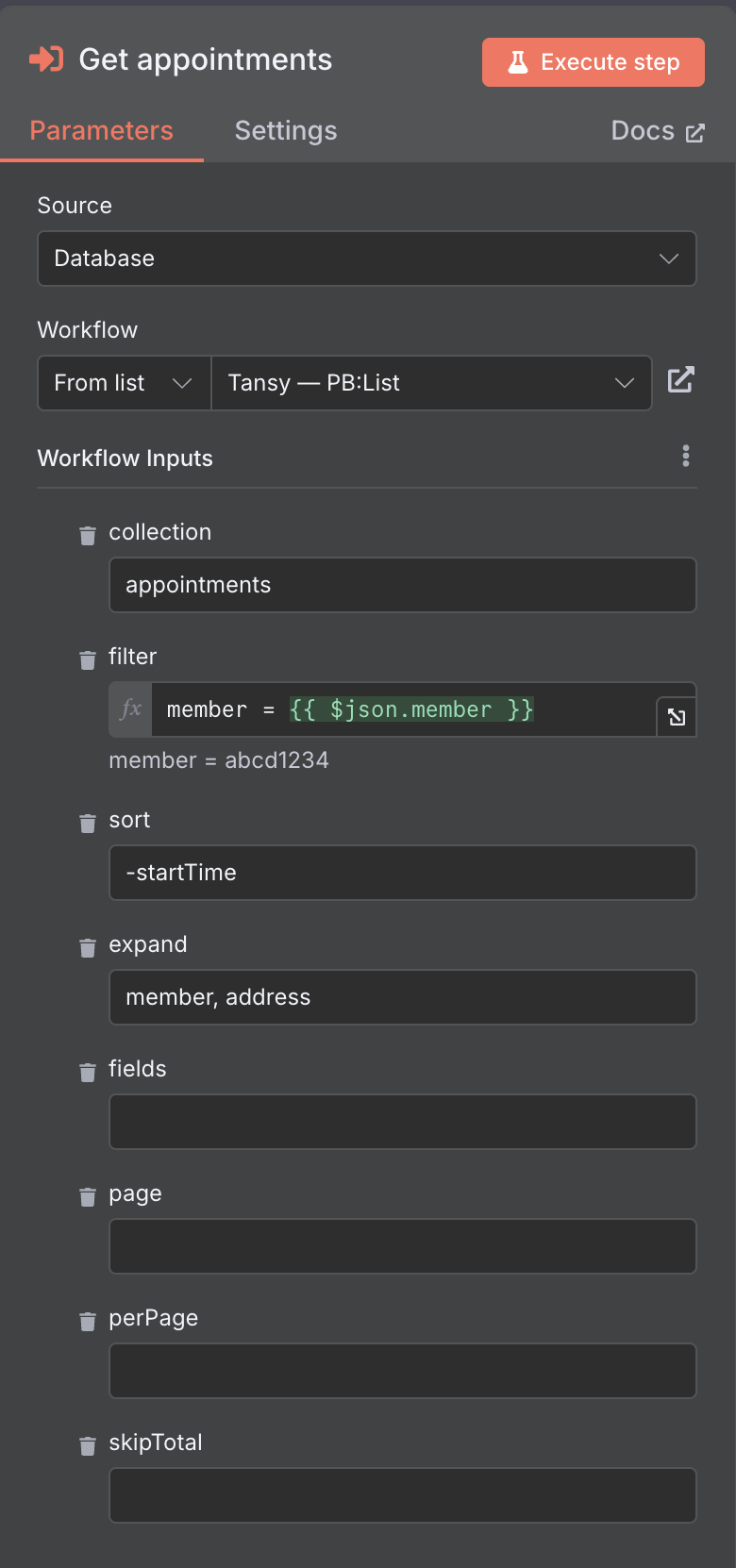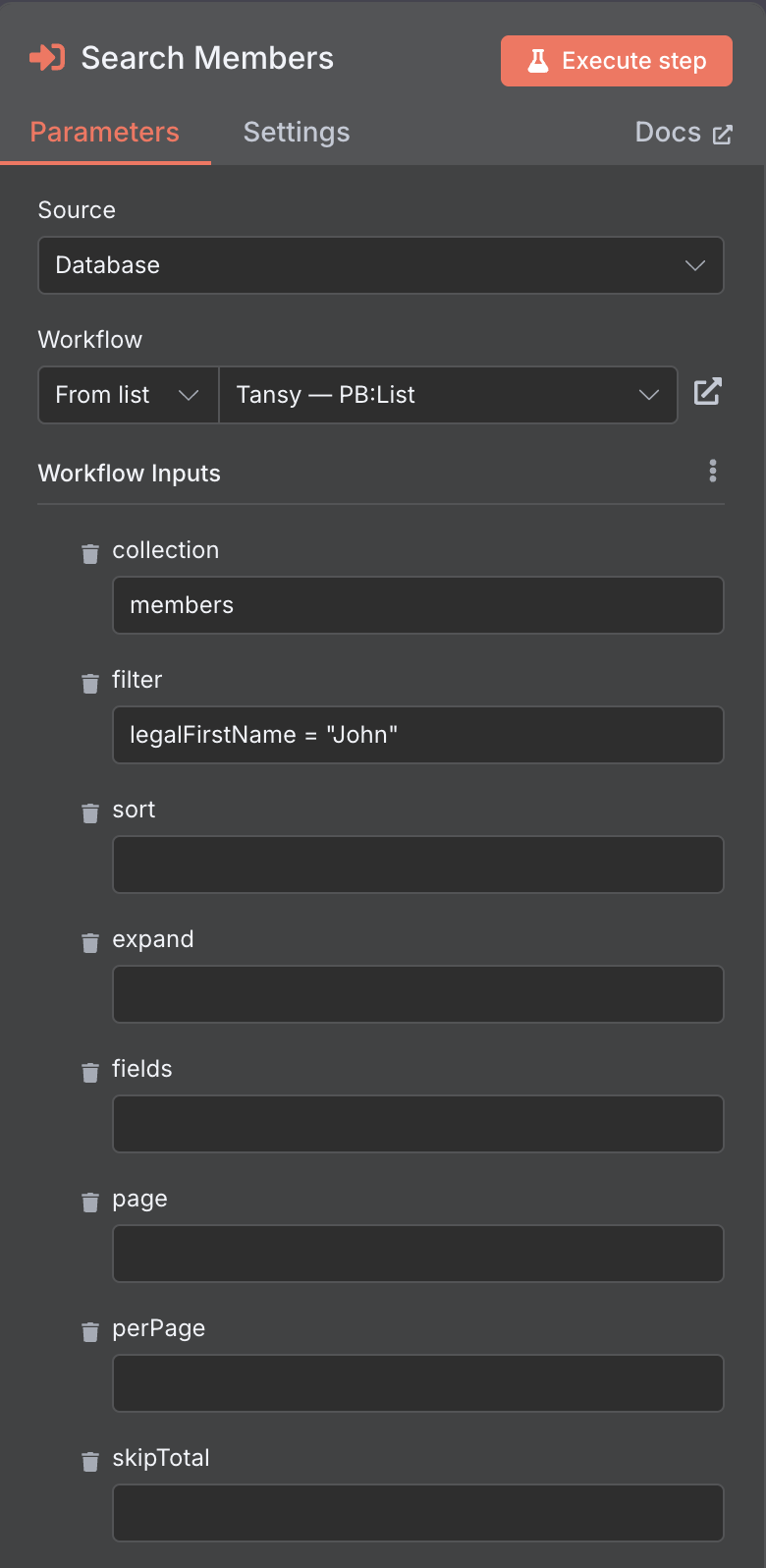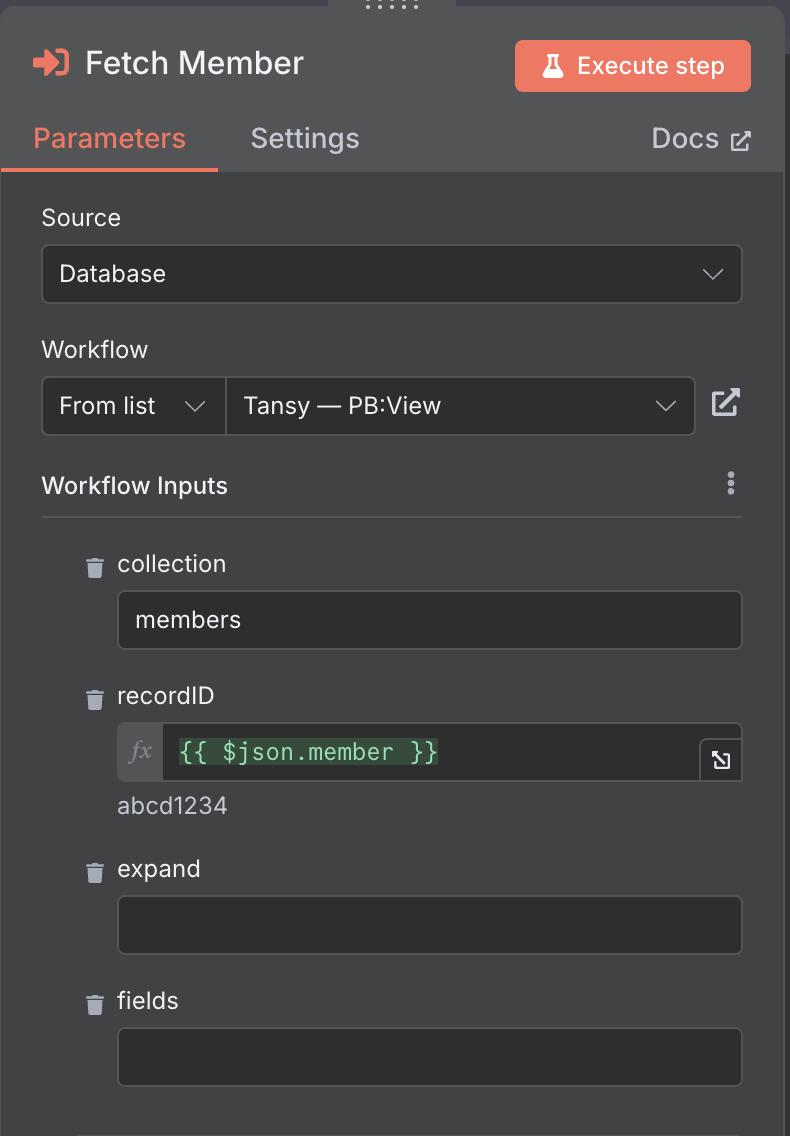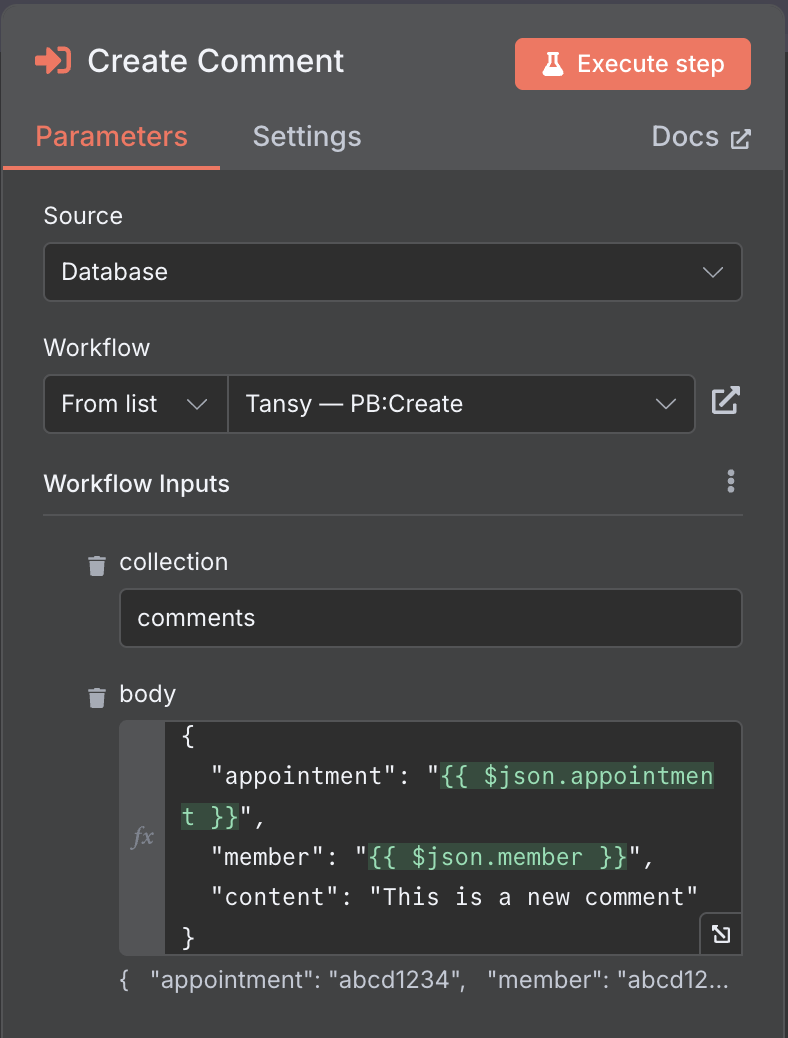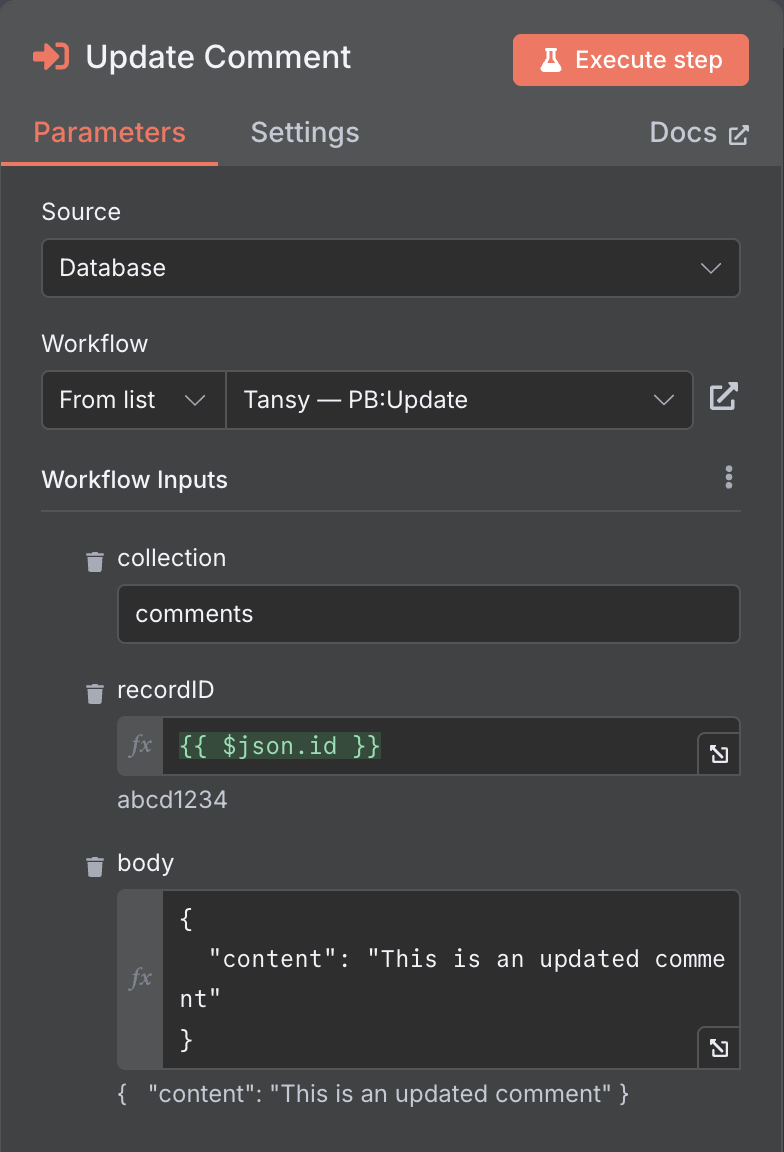The Pocketbase API is a CRUD api to interact with our system.
It is exposed by Pocketbase and is covered in detail on their api docs page
I find the pocketbase docs to be a bit confusing to read and look through at times. There is a lot of information there for many different systems within pocketbase, and the info is often not where you would expect.
This doc is meant to outline how we use the api, and link to the relevant docs.
n8n integration
The main purpose of this api is for use within n8n automations.
I have created sub-workflows that hide the more technical aspects of using the api like authentication and provide an easy to use interface.
There are currently 4 operations that should cover any need we have.
PB:List
Performs queries for multiple items/searches.
Returns an object that contains an array of items and meta fields.
PB Docs
Inputs:
- collection*
- filter (optional)
- sort (optional)
- expand (optional)
- fields (optional)
- page (optional) | pagination page, default: 1
- perPage (optional) | number per page, default: 30
- skipTotal (optional) | boolean to skip total count for speed up, default: false
Example: List
Get all of a member’s appointments sorted by start time with it’s member and address information included
The filter is very important when dealing with user specific information. If not included it will return all appointments from all users in tansy.
Example: Search
Searching for a member with a specific name.
The query can be customized to any extent using the inputs. Check the PB Docs for how each one can be used
PB:View
Fetches information of a single record.
PB Docs
Inputs:
- collection*
- recordID*
- expand (optional)
- fields (optional)
Example
Get the member of an appointment.
It just needs the collection and ID to fetch any record.
The expand field is useful for nested queries.
PB:Create
Creates a new record.
PB Docs
Inputs:
- collection*
- body (object) | the object to create
Example
Add a new comment
Here the part to be careful of is making sure the body payload matches the minimum record schema that you are attempting to create.
PB:Update
Updates an existing record.
PB Docs
Inputs:
- collection*
- recordID*
- body (object) | any field that is being updated in the record
Example
Updating the text of a comment
The body payload just needs to contain the field that is being updated
An “*” means that input is required.
Note there is no PB:Delete function. This is simply because it’s a bit dangerous and we don’t have a use for it right now. Pocketbase also provides a PB:Batch endpoint for updating many records at once, but we don’t need that yet either.
This API replaces the Legacy API.
Auth
This API uses pocketbase _superadmin privileges, meaning it can do anything within our system.
Details on how it is set up is in the sudo API Keys section of the PB docs.
Basically the requests attach an impersonate token that allows it to act as a superadmin.
These tokens have an expiry and cannot be renewed, but luckily can be easily rotated in an n8n credential without needing to update all sub workflow nodes.
This means the permissions from the app do not apply. You could potentially return incorrect data or share private information if you do not structure your queries correctly.
